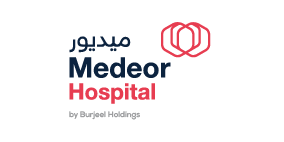Varicose Veins
Varicose veins are a common problem. They are enlarged blood vessels (veins) that bulge just beneath the surface of the skin. Varicose veins can appear in different sizes and are commonly blue or purple. They result from the weakening of vein walls and poor functioning of the valves inside the vein (incompetent valves), leading to the enlargement of the affected veins.
In normally functioning veins, one-way valves only allow blood to flow towards the heart. When these valves become incompetent (leaky), there is a reversal of blood flow, resulting in the pooling of the blood, which can cause varicose veins.
Varicose veins are often more noticeable when standing up and disappear when lying down. This is because veins become filled with blood due to gravity when standing.
They commonly occur in the lower half of the body and the legs. Some patients may also experience them in the hip or pelvic region.
What Are Spider Veins (Thread Veins)?
Spider veins, also known as thread veins, are another type of venous disease. They are thinner and smaller than varicose veins (1-3 mm) and resemble branches of a tree or spider webs. They can appear red or blue in color and are most often seen behind the knee, on the feet, and on the face. Spider veins are usually associated with underlying vein problems.
What Are Perforator Veins?
Perforator veins, also known as communicating veins, are short connections between the deep and superficial venous systems. These connections are normal. The one-way valves in these veins allow blood flow from the superficial vein into the deep vein. When these valves become dysfunctional, it could lead to skin changes, ulcerations, and recurrence of varicose veins.
Who Is at Risk of Getting Varicose Veins?
Anyone can get varicose veins; however, some people may have an increased risk of developing this condition.
These risk factors include:
- Female gender: Female patients can be at an increased risk of varicose veins due to female hormones
- Age: Varicose veins can become more common with ageing
- Lifestyle/job: Varicose veins can be more common in people who sit or stand for prolonged periods
- Family history: Varicose veins can be hereditary
- Excess weight
- Smoking
What Are the Symptoms of Varicose Veins?
- Visible bulging veins or spider veins
- Leg swelling, which can cause a throbbing sensation
- Painful legs and/or heavy legs, typically after an activity
- Skin itchiness and venous eczema
- Skin discoloration, which could range from mild to dark discoloration and scarring
- Thrombophlebitis, which is inflammation and swelling of the vein, often due to the formation of a clot inside the vein
- Ulcers: In some cases, varicose veins can cause skin ulceration
- Bleeding: In some patients, varicose veins can bleed
How Varicose Veins Are Diagnosed?
Diagnosing varicose veins involves a detailed examination by your doctor and an ultrasound scan of your veins. Ultrasound is a safe and painless scan that uses sound waves to assess the veins. Duplex Ultrasound will help your doctor check your vein valves for incompetency (leakage), size, and the presence or absence of a clot inside them.
Treatment and Management
Varicose veins can be treated in different ways, as below. Some patients might require a combination of different techniques for the treatment of their varicose veins.
- Conservative management, including leg elevation and compression stockings
- Laser ablation (EVLT), in this technique, a laser is used to block the veins
- Radiofrequency ablation (RFA), in this technique, heat is used to block the vein
- Mechano-chemical ablation, in this technique, a combination of mechanical ablation of the vein and injection of a sclerosant is used to block the vein
- Sclerotherapy uses an injection of a liquid or foam (sclerosant) to make the walls of the vein sticky and block
- Glue
- Open surgery, in which the veins are stripped
Potential Complications of Varicose Vein Treatment
It is important to remember that although many patients will have a good outcome and a better quality of life after varicose vein treatment, some patients may develop complications. In addition, some patients might require multiple treatments for their varicose veins and spider veins.
Complications of varicose vein treatment include skin irritation, redness, discoloration, burns, infection, nerve injury, and deep vein thrombosis (formation of blood clots in the deep veins). Sclerotherapy could cause skin irritation, lumps, discoloration, and redness.
Why Do Some Patients Re-Develop Varicose Veins and Spider Veins, Even After Treatment?
This could be due to several reasons. In some patients, previously healthy veins with normal valves could develop incompetence (leaky valves), leading to the formation of new varicose veins.
Patients who received incorrect treatment for their varicose veins, or had the wrong veins treated, may experience a recurrence of varicose veins. Additionally, patients with incompetent perforator veins could experience a recurrence of varicose veins.
What Can I Do to Prevent Varicose Veins?
Although it may not be possible to entirely prevent the development of varicose veins, the following measures can help reduce the risk and prevent them from worsening:
- Try to maintain a healthy weight
- Quit smoking
- Wear compression stockings to promote blood circulation in the legs
- Stay active
- Avoid prolonged standing and elevate your legs often
Do I Need to Treat My Varicose Veins, and Which Treatment Should I Get?
If you have varicose veins and spider veins, you can request an appointment with our dedicated team at Medeor Hospital, Dubai. We understand that each patient is unique. Furthermore, our hospitals offer a wide range of treatments with the latest technologies, allowing you to choose the best treatment. Personalized recommendations will be tailored for you.
For further advice regarding a personalised treatment for your varicose veins, please make an appointment with Dr Soroush Sohrabi, consultant vascular and endovascular surgeon, at Medeor Hospital.


